Guayaquil (pronounced why-a-kill) is a port city found on Ecuador’s pacific coast along the Rio Guayas River. Most travellers don’t spend a lot of time here, rather they transit through here en route to Galapagos. Paul and I found ourselves here for 4 nights in an effort to regroup and plan onward travel.
We originally intended to head north into Columbia after Galápagos but unfortunately the political climate in Columbia has changed in the past few weeks and so, we made the decision to spend more time exploring Ecuador in hopes of things simmering down across the northern boarder in the weeks to come.
Our hostel, a warehouse on the northern end of the city’s famous Malecon, was a new accommodation experience for us! A clean private room with private bath; the room was a combination of steely grey floors and white concrete walls accessorized with simple, two-dimensional metal art. The double mattress sat abreast two wooden pallets neatly placed on the cold concrete floor. Oddly comfortable and interesting to say the least, it was ideally located.
Directly across the street from our hostel is Guayaquil’s Malecon 2000. One of the most extensive urban-renewal projects in South America, Malecón 2000 is made up of monuments, playgrounds, sculptures, gardens and river views. The malecon (essentially a beautiful and extensive boardwalk) stretches 2.5 km along the bank of the wide Río Guayas and is a gated, policed, public space with restaurants, a museum, a performance space, a movie theatre and a shopping mall.
Everything that anyone wants to see in the city, is somehow connected to the malecon and so Paul and I found ourselves walking it’s length a couple of times a day.
With this said, our first evening and the following day was completely consumed with finding a reputable source to diagnose and repair my iPhone. It died on the Galapagos and despite someone offering to fix it, I decided to wait until I got to the city to get it repaired...not as simple a feat as one might think.
There is no Apple store in Ecuador (so I was told); rather, there are Apple affiliate stores called Think Store. The repair guy told me that my touch screen was broken (not the screen itself but the touch feature) and needed to be replaced. It would cost $650 US and the part would have to be ordered from the USA...it would take 16 days! What!??
Refusing to believe this was my only option, we popped in and out of cell stores and after hours of ground work, nobody would recommend someone who could help me out. In the end, the receptionist at the hostel recommended a friend who had a store 30 minutes away. We texted back and forth and he agreed to open his store and fix the problem for less than half the cost. What’s a girl to do!
Four hours later we left the store with my phone touch screen working but it still wouldn’t stay turned on. He offered to investigate the problem for another “few” bucks but I decided to google a fix and so far (touch wood) things are working out! Fingers crossed!
For the next two days we combed the city, visiting its historic buildings, university campuses, notable city squares and more.
We went on a walking tour whose guide was a university student studying tourism. She was a lovely young girl and shared Guayaquil’s history, troubles and achievements! It was a wonderful way to spend an afternoon and to get acquainted with the city.
Our walking tour started in Seminary Park, found directly in front of the city’s main cathedral. Interestingly enough, the park’s namesake comes from the surname of the person who built the park and incidentally, he was not associated with a religious order as his surname might imply.
Also, another interesting fact about this park is that it is inhabited by a colony of iguanas who are wild but choose not to leave its confines. Here, they live alongside a few hundred pond turtles, protected and fed by tourists and locals alike. It was also here that Paul suffered his first (and hopefully last) “attack” by an iguana.
Locals, sell Gringo (white tourists) lettuce, who in turn feed the iguanas. Paul took to a rather excitable iguana who reached up his pant leg and stretched his scaly little body, craning his neck for Paul’s lettuce. Paul was taking great delight in feeding the little fella and perhaps was taking too much time doling out the leafy greens. Next thing we knew, Mr. Iguana lunged forward just enough to catch the leaf before Paul was ready and incidentally caught his finger in pursuit of the food!
Blood was drawn and his finger started to swell almost immediately. FFS! We applied alcohol disinfectant, added a few drops of iodine and some antibiotic cream for good measure and wrapped it all up with a bandage.
Despite the swelling having eased, Paul was carrying a grudge and wanted to go back and face the little frigger...I suggested we not! ...
Moving on...
Not far from the cathedral is a Catholic church found in San Francisco square, known locally as Pigeon square. Like many other historical building in Guayaquil, it is relatively new, dating back to the 1950s since many were burned in fires throughout history.
Legend has it, a common man, bet that he could build a church in two weeks. It would be a church that all could attend regardless of community status and it would also rival the cathedral. He was given permission to built the church and he did so within the two weeks, except for the roof.
Fearing that he would lose the bet and his reputation, he retreated to the interior of the church and prayed for God’s help. God answered his prayers by sending angels in the form of pigeons who gathered straw and other materials, weaving together a solid thatched roof, all before sunrise of the last day!
Immortalizing both the man and the pigeons for their efforts, the square outside the church was dubbed “Pigeon Square” and monuments of the common man were erected around its periphery.
Today, people flock to the square to eat lunch, hang out & chat to friends. They also come here to rub lottery tickets onto the heads of the bronze monuments of photographers, salesman, bakers etc., hoping that the common man might bring extra luck. The square had a lovely atmosphere and you could tell that people enjoy it very much.
Each evening, after exploring the city, we walked past the end of the Malecon, along a cobblestone street that eventually joined another boardwalk. Here, under a kilometre of canopies, we found a wide range of restaurants that infused traditional Ecuadorian flavours in modern dishes. Eating here was positively a wonderful gastronomic event!
After a few days of beating the streets of the city, we felt we had absorbed as much of Guayaquil as reasonably possible and were ready to move on. With Cuenca only a four hour bus ride away, we decided to ‘get out of Dodge’ and head for the hills!

 Guayaquil, Guayas, Ecuador
Guayaquil, Guayas, Ecuador
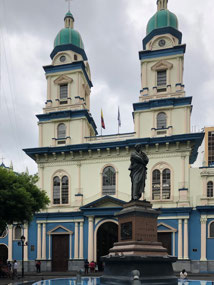
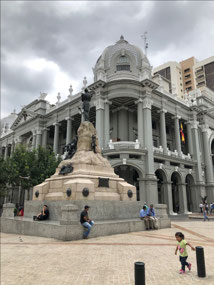
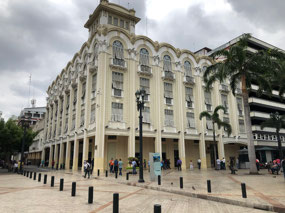
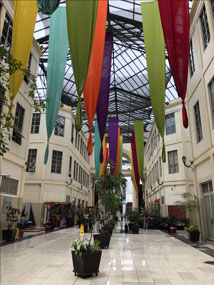





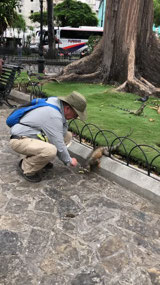
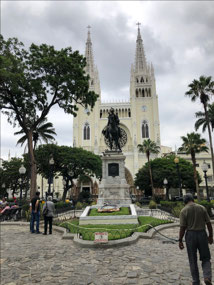
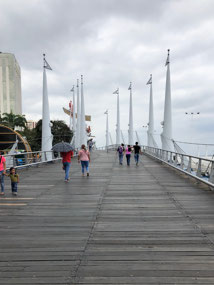
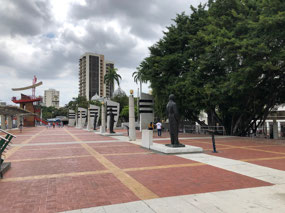
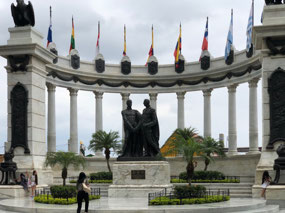
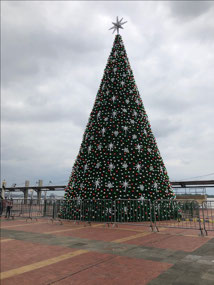
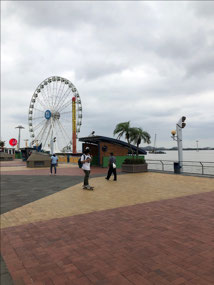
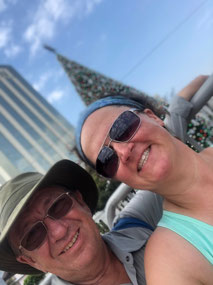
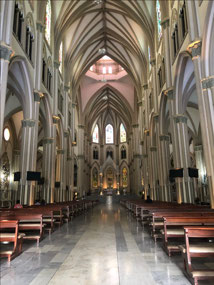
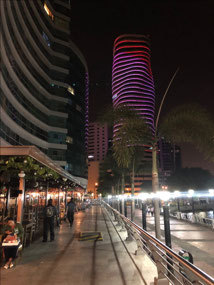
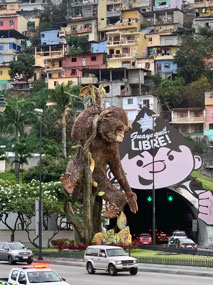
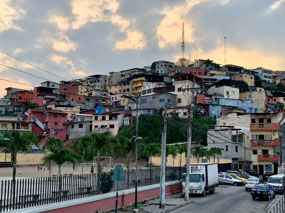
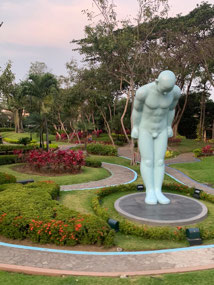
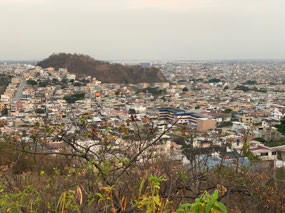
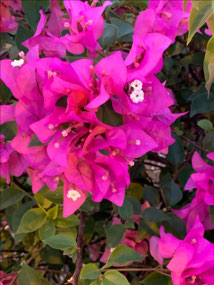
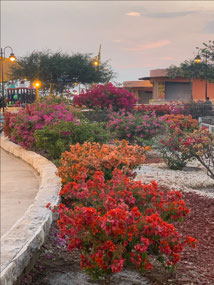
Agnes Penton
2019-11-26
Guayaquil sounds positively wonderful. Great stop after the Galapagos and gorgeous pics. Safe travels onwards!
Aunt Madeline
2019-11-26
Hope Paul's hand is well on the mend! Another account of your amazing journey. Cheers.
Lee Anne
2019-11-28
Poor Paul....lol Beautiful photos! ❤❤